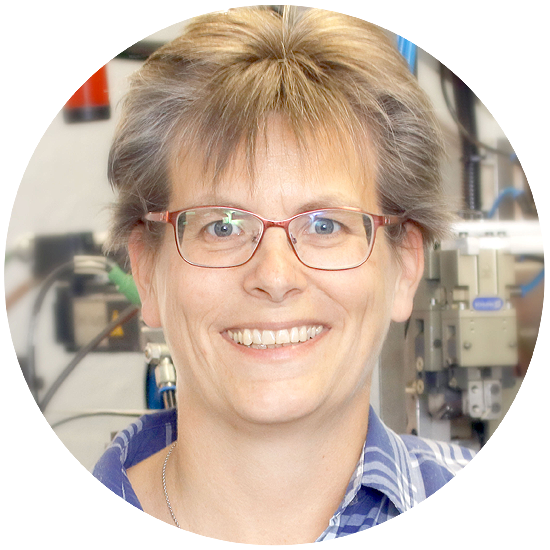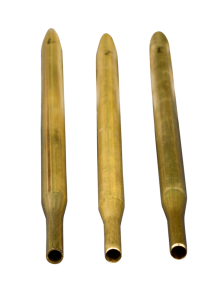Do you need a quotation or advice about our processes and services?
Our technical project manager Caroline Deutschmann, is happy to answer any of your questions.
Contact her directly at +49 (0)2352 9781 0

DRILLING AND REAMING
DRILLING AND REAMING
Using our drilling machines, we can drill pipes ranging from 3 to 10 mm in the diameter at axial lengths of 80 to 130 mm. The holes can be calibrated according to specifications using a reamer to rub and achieve the exact diameter needed.
Tubes that have been stretched lengthwise by a forming process can be drilled and brought back to their precise lengths. With our machines, we not only process easy-to-machine materials, but also long-chipping non-ferrous metals – such as brass CuZn36 / 37, which is particularly suitable for processing on rotary swaging machines.
A special drilling emulsion is added to the machining process. Residue from the emulsion is completely removed by our degreasing and washing system. Tubes that are closed on one end are also washed here. Our special centrifugal method ensures that the parts are also dried on the inside after washing.
ESSENTIALS OF DRILLING AND REAMING
PROCEDURES
The term drilling means a machining process, which involves adjusting already existing holes or rounding out those not yet defined, to a preferred size.
For metals, the use of twist drills with two or in rare instances three cutters, is implemented. The chippings form at the tip of the drill, and are discharged through the spiral in the opposite direction to the feed.
The geometric cutting obtained when drilling depends essentially on the properties of the material and their width.
Many materials require, a coolant to be used during drilling which prevents both friction and overheating to occur. There is a wide variety of coolants available, which are adaptable to the drilling process and material properties.
Reaming is known as the end process of drilling, pertaining to a very narrow measurement threshold. For example, the tolerances of fits are measured in microns (µm).
Reamer cutters are not arranged at the tip like those of a drill. They are positioned on the periphery of the machine in an axial direction. The multitude of blades and their axial positioning create smooth, round and defined holes. Reaming requires previous drilling, where the drilled hole is only 0.1 – 0.2 mm wide in order to achieve the targeted dimensions.
TECHNICAL PARAMETER
Tube diameters of 3 to 10 mm
Tubes lengths of 80 to 130 mm
Holes can be calibrated as specified by using a reamer to rub and achieve high-precision diameter.
Processing easy-to-machine metals
Processing long-chipping non-ferrous metals
ADVANTAGES OF REAMING
Parts should be fitted in a tube
If a round body is crimped, soldered or inserted into a tube, drilling and reaming offers a variety of possibilities to control the inner diameter of the tube. All tolerances are available, ranging from unmounted to smooth to tightly pressed.
Parts should be inserted into and not fall through the tube
By introducing a step drilled hole, which has not been drilled through, the plug-in depth of the second part can be limited and controlled by the drilling depth.
Reprocessing rotary swaging parts
Inner diameters that have been processed by rotary swaging but are still not precise enough because they are too small, are calibrated by drilling and reaming so that they are processed over an internal mandrel.
GUSTAV SELTER GmbH & Co. KG
Hauptstraße 2 – 6
58762 Altena
Germany
© COPYRIGHT 2016-2023 GUSTAV SELTER GMBH & CO. KG


